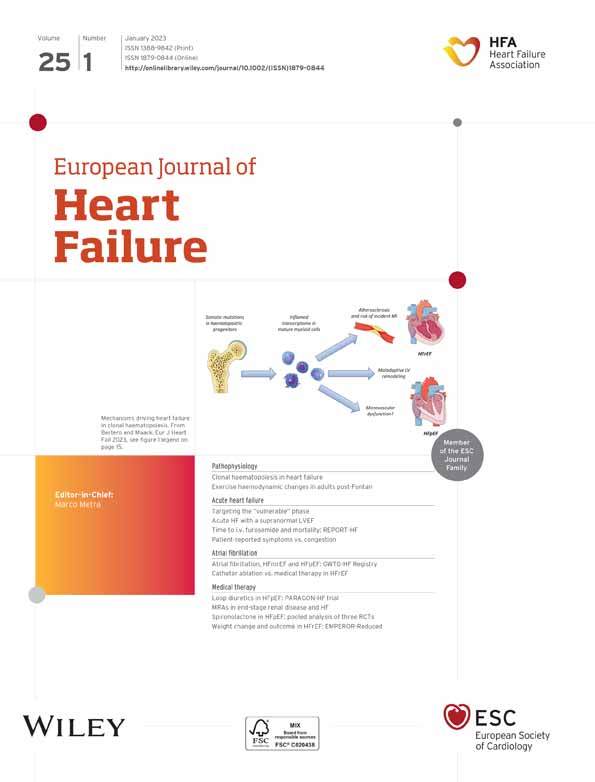Reply to the letter regarding the article ‘Clinical implications of left atrial changes after optimization of medical therapy in patients with heart failure’
We thank Yu et al. for their comments on our research paper assessing the clinical and prognostic implications of left atrial (LA) structural changes after optimization of medical therapy in patients with heart failure (HF).1 In the past decades, the concept of LA remodelling has evolved, and the contribution of the left atrium to the pathophysiology of HF has significantly grown.2-4 Indeed, changes in LA structure and function may be either a marker of HF severity and a mechanism actively contributing to the progression of cardiac dysfunction. At the same time, increasing interest has recently been observed on the prevention of LA dysfunction and treatment of LA disease. As for left ventricular (LV) structure and function also for the left atrium, medical therapy has been shown to be associated with a favourable change in structure and function pointing out the importance to assess the left atrium in clinical practice as a potential marker of treatment response.5 As correctly pointed out by Yu et al., along with medical therapy, also the use of device such as cardiac resynchronization therapy (CRT) and MitraClip system have been shown to favour LA reverse remodelling with a beneficial impact on prognosis.6, 7 As reported by the authors, also previous analysis from the Multicenter Automatic Defibrillator Implantation Trial with Cardiac Resynchronization Therapy (MADIT-CRT)6 study showed that reductions in LA volume with CRT-defibrillator (CRT-D) at 1 year were highly associated with reduction in LV volume, suggesting a cause–effect relationship. In this trial, most CRT-D patients experienced ≥20% reduction in LA volume, while the implantable cardioverter-defibrillator (ICD)-only group had a significantly lower LA response. Patients who showed a favourable LA response to CRT-D experienced a subsequent reduction in the risk of atrial tachycardia (AT), HF events and death. Interestingly, AT risk reduction appeared to be related to LA response independently of LV structural changes. Also, Kloosterman et al.8 retrospectively assessed LA reverse remodelling in 365 patients who were eligible for CRT. They reported that discordant left-sided reverse remodelling (LA without LV reverse remodelling) showed comparable mortality and HF hospitalization risk to patients with both LA and LV reverse remodelling. Thus, successful CRT can reduce LA size and improve LA function, and LA reverse remodelling might improve outcome in CRT patients, even in the absence of LV remodelling. Overall, these findings suggest that LA reverse remodelling can be considered an active player of the so-called complete left-sided reverse remodelling.5 Given the post-hoc nature of the reported studies, data should be interpreted as ‘hypothesis-generating’. The concept that guideline-directed medical treatment for HF may have beneficial effects also on LA remodelling and that this may be a marker of better outcomes is novel and warrants prospective replication. Also, the use of novel echocardiographic parameters such as speckle-tracking echocardiography may increase the ability to detect subtle favourable changes in LA chamber but yet data are scarce. Prospective clinical trials are required to establish the role of LA reverse remodelling as a marker of therapeutic response, by both medical and device interventions, in clinical practice and assess its potential independent role as a mechanism of development and progression of HF.




